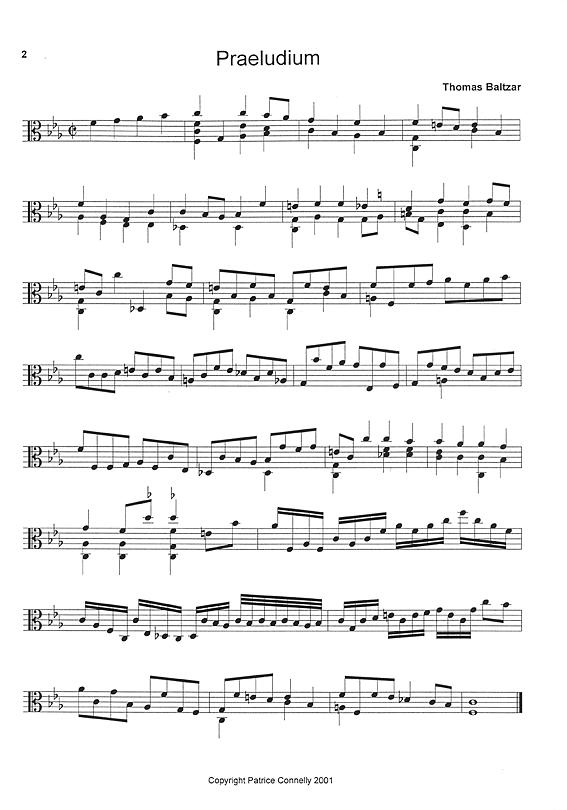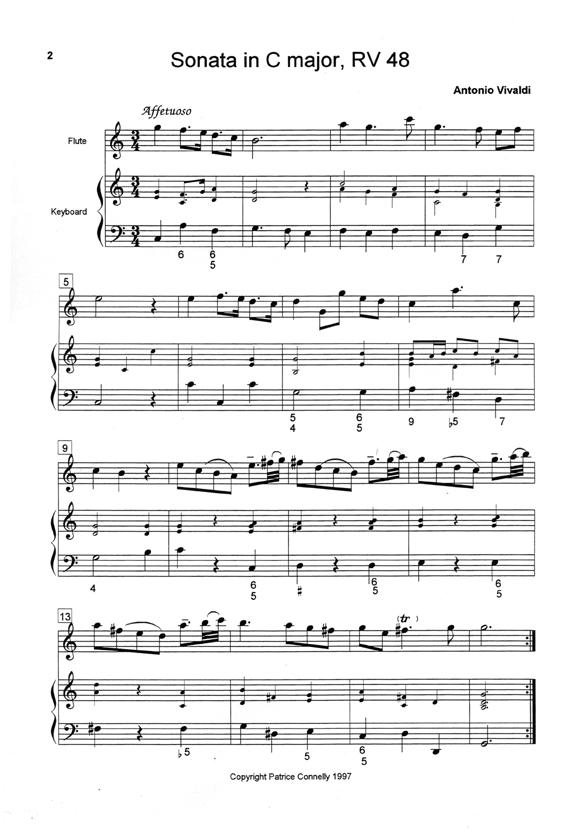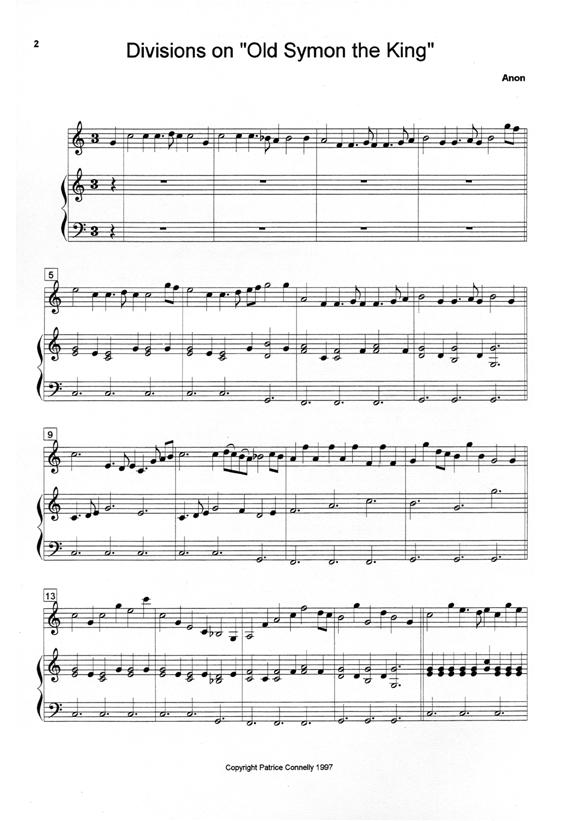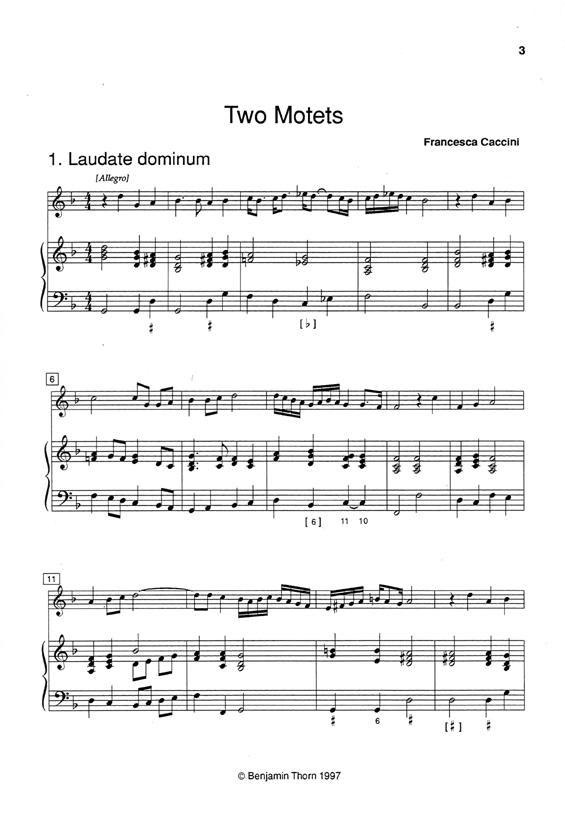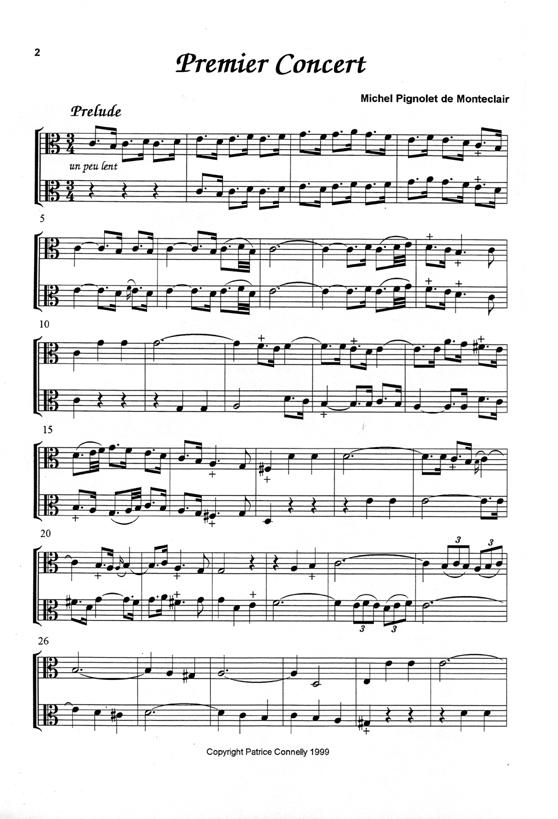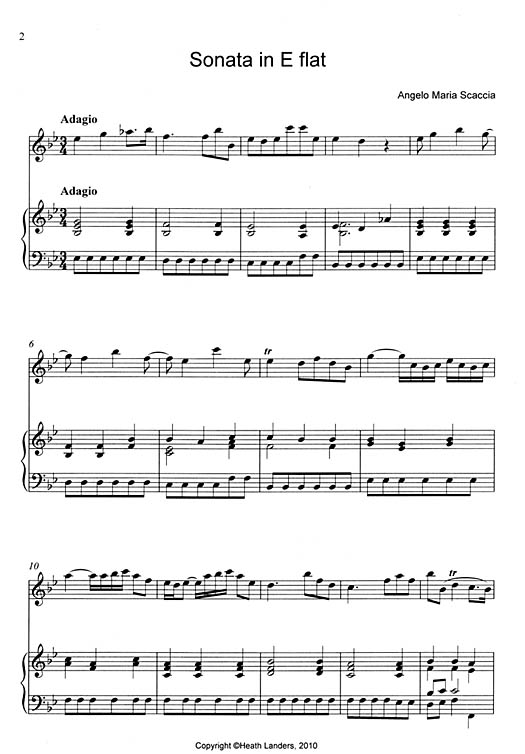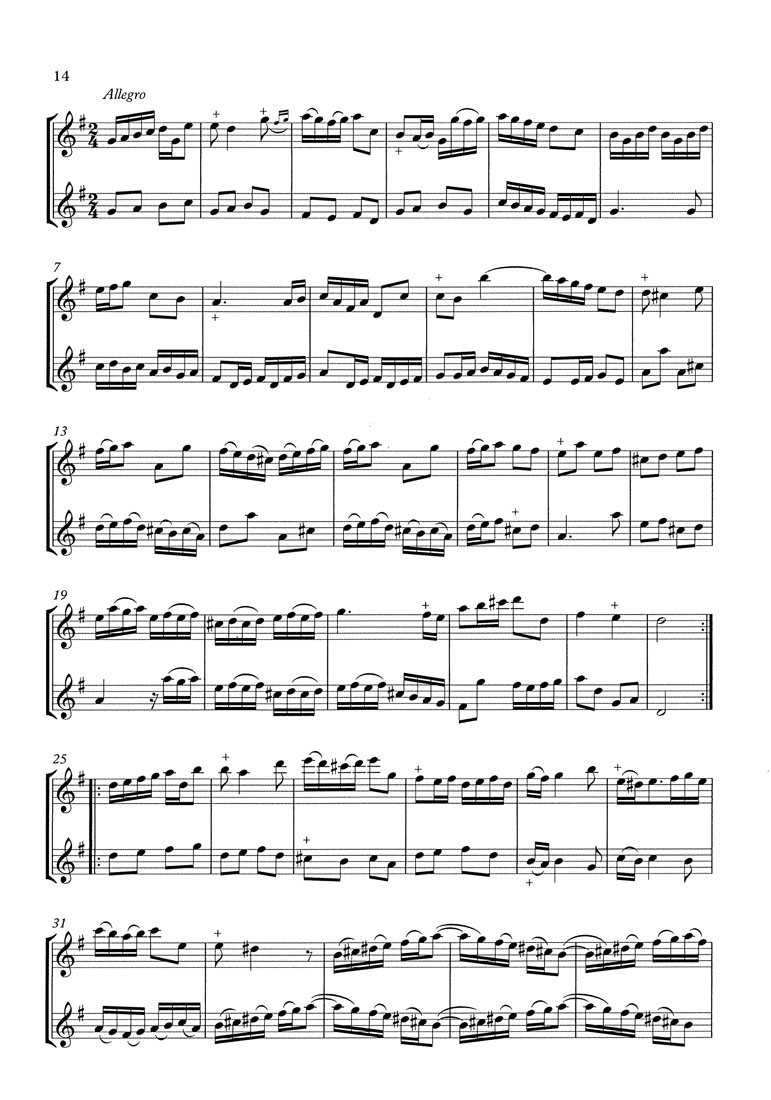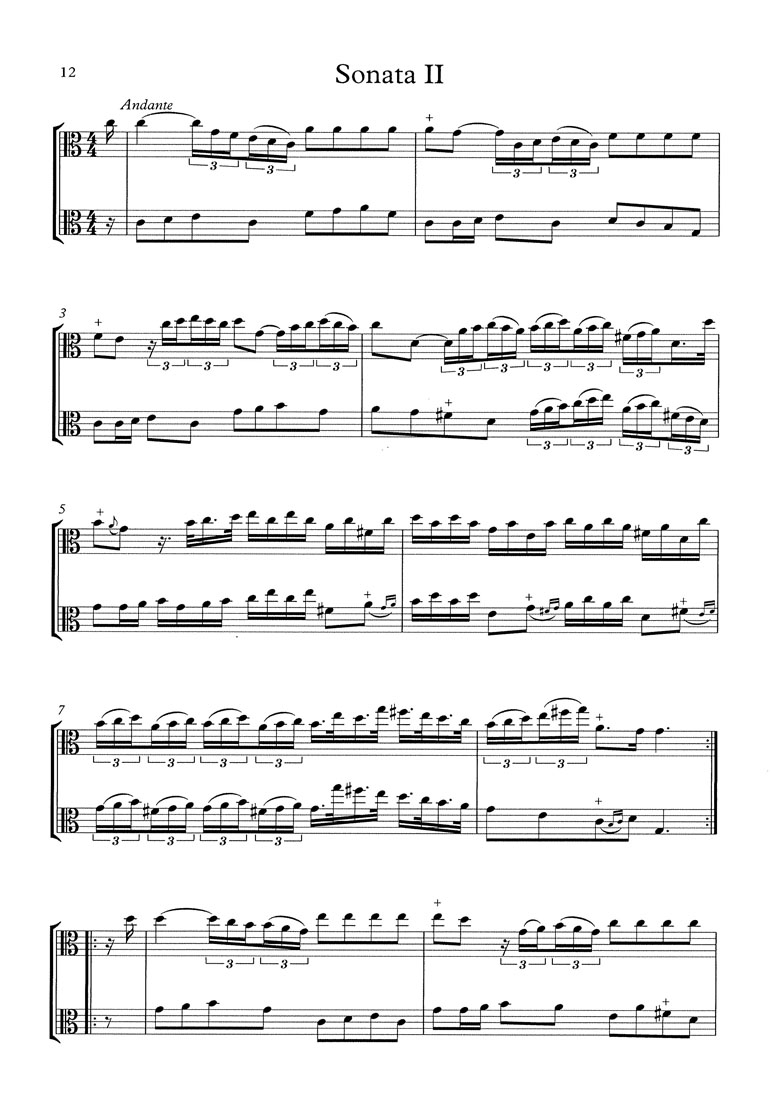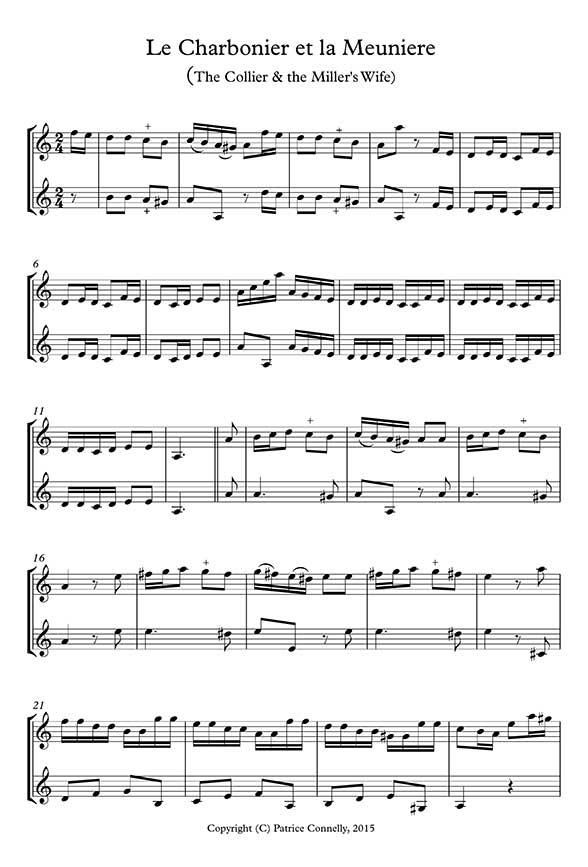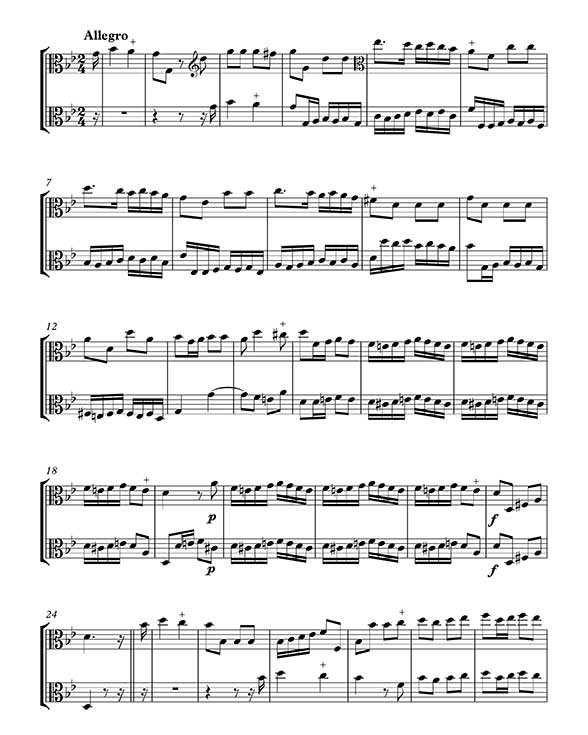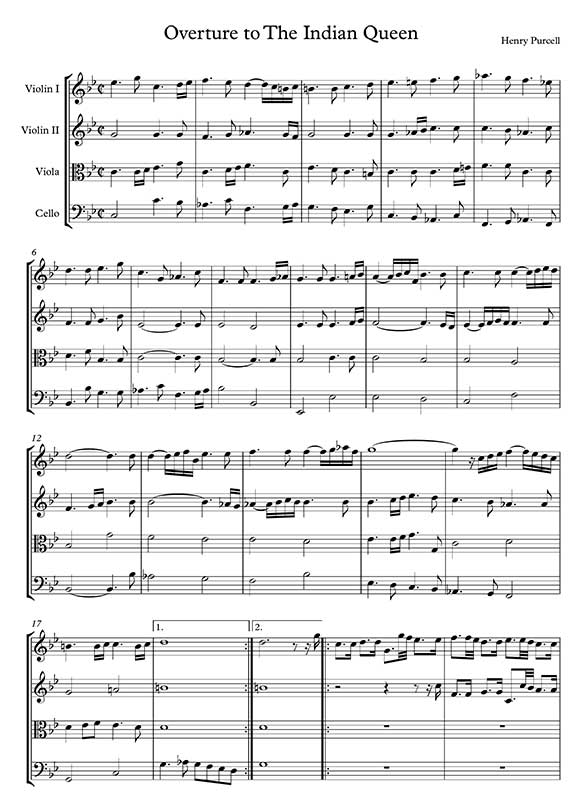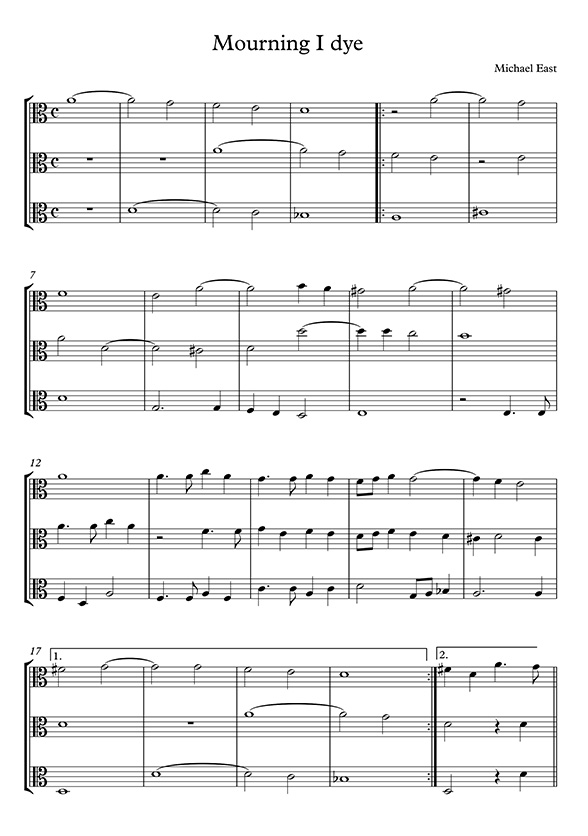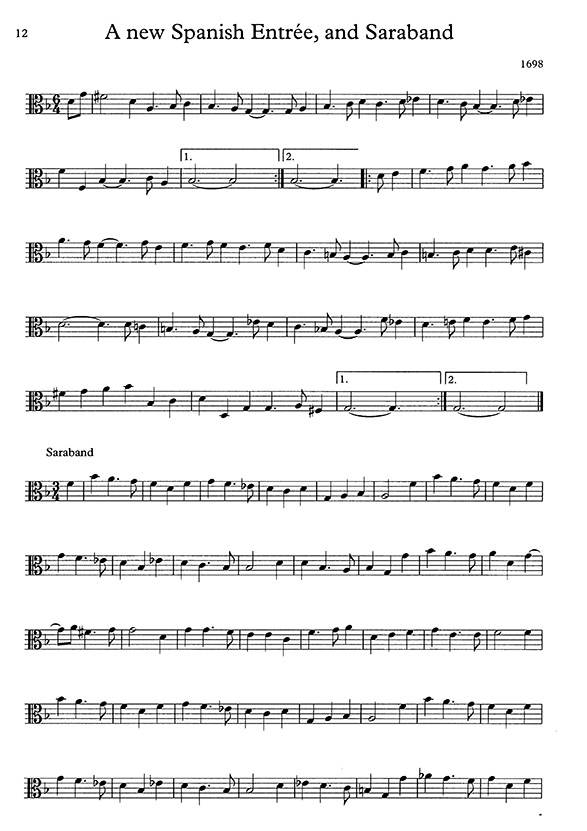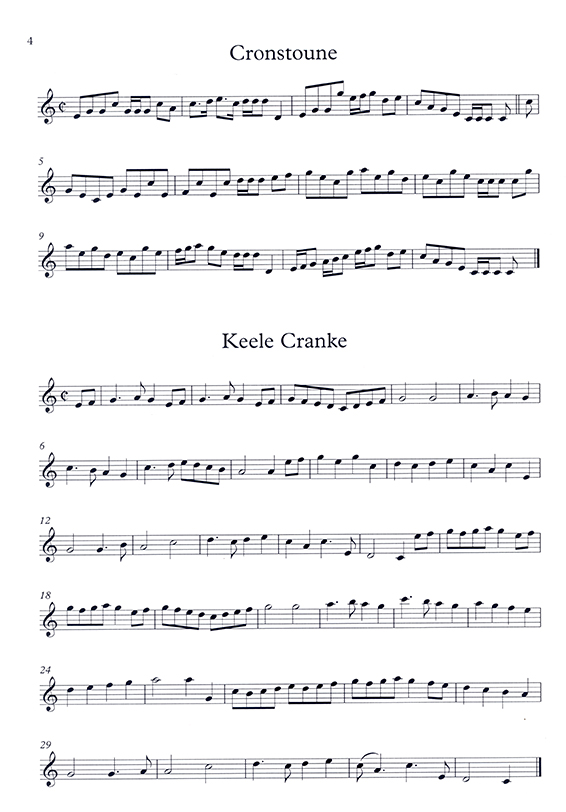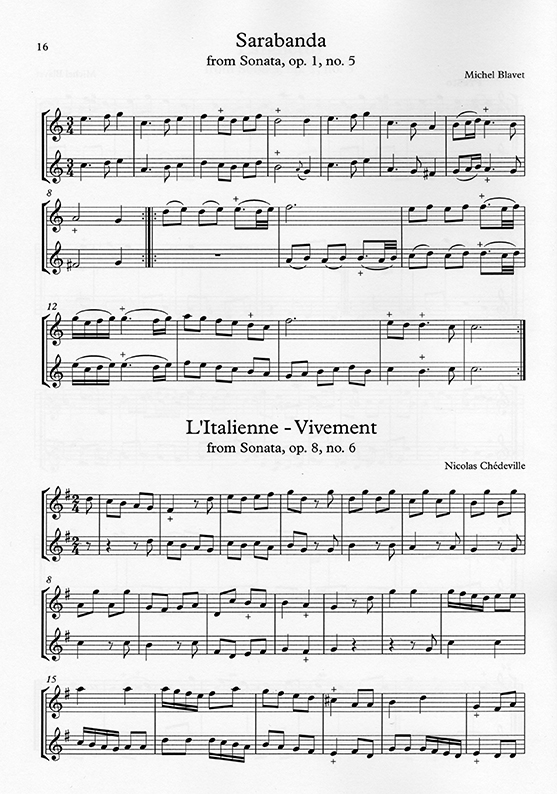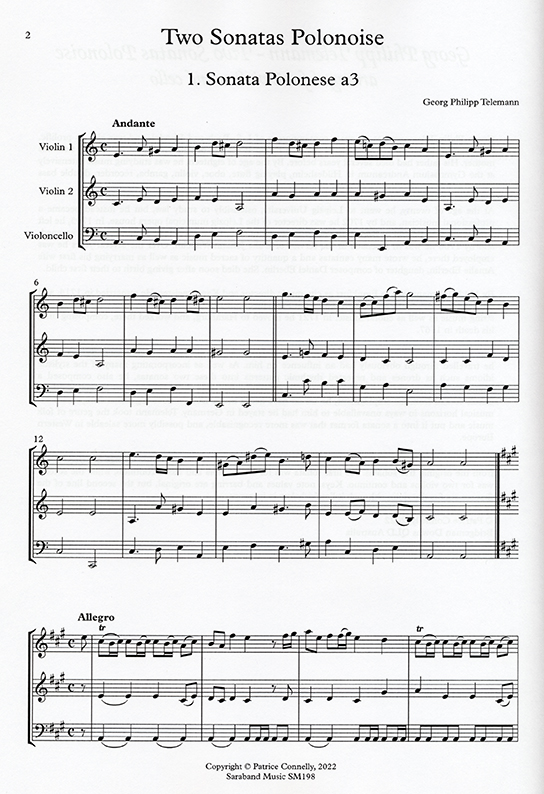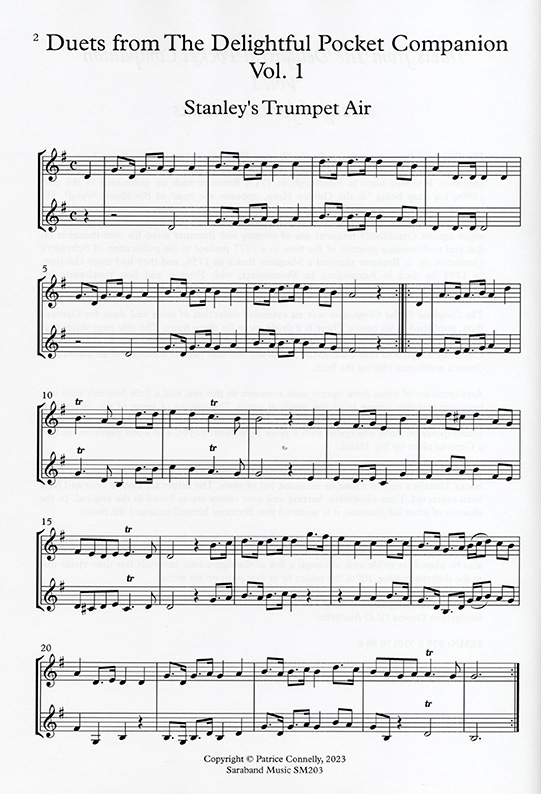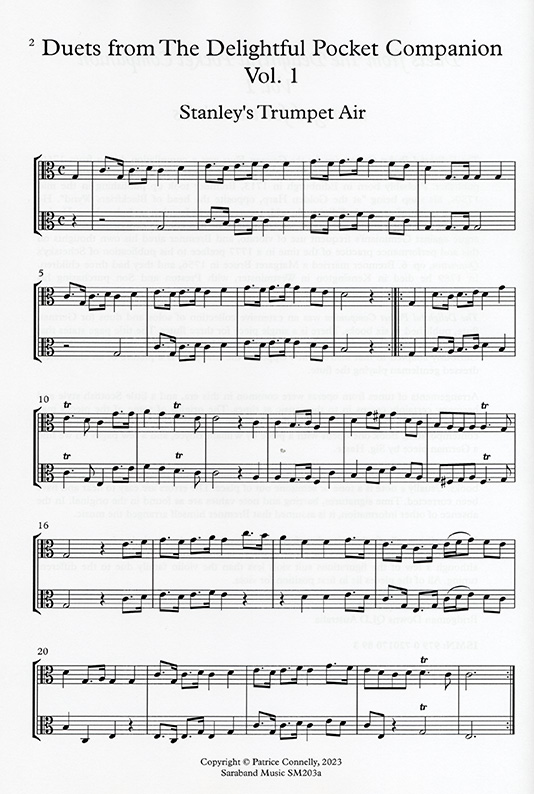Bowed Strings Editions

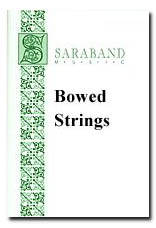
Sample pages have been provided from each edition
These are copyright, and are not necessarily indicative of the standard of difficulty of the whole edition.
Prices on this page do not include Australian GST. Australian residents please add 10%.
These 6 dances were hitherto unpublished works by Thomas Baltzar. They are chordal in style. The edition contains a Praeludium, Allemande, Sarabande, Allemande, Courante and Sarabande. They come from the Oxford Bodleian MS Mus. Sch. F.573.
The same music as SM3, but transposed down a fifth and put into alto clef for viola. No other changes made. This should be a valuable addition to the scarce 17th century repertoire for viola.
This sonata was written for flute but can also be played on violin or recorder. It is not particularly difficult music. The figured bass has been realised, and it comes with flute, bass and keyboard parts. The figured bass is also given.
These two pieces of divisions for solo violin (with optional keyboard accompaniment) are not terribly difficult, and are fun to play. Old Symon was taken from a manuscript, while Woodycock is an arrangement of the bass viol piece.
SM23 Francesca Caccini: Laudate Dominum & Haec dies, arranged for tenor recorder (violin) & b.c. $12
Another of Ben Thorn's arrangements of music by early female composers. Daughter of the famous Giulio Caccini, Francesca published these two works in 1618. This piece would also work played on violin.
Originally for two flutes, this charming suite has been transposed and put into bass clef to suit cellos. It is quite a substantial suite, and suitable for teaching or performance. SM30 is an arrangement of the same work for 2 viols or violas. (See the viol duos page for details) Two scores. This sample page is from the viols edition.
Two violin sonatas by Angelo Maria Scaccia, from a manuscript in Cambridge University Library, edited by Heath Landers. Scaccia was one of the Milanese School of violin performers and composers. This is a first edition.
These are six interesting sonatas which date from 1739, and were republished in 1765. They were written for two flutes, or violins, oboes or pardessus de violes. This is a critical performing edition with commentary and an extensive intro. Two volumes, with 3 sonatas in each. Single score. Audio is the first movement of the first sonata.
This music is the same as SM104-105, but transposed down a fifth for 2 violas. The commentary relates to the original flute edition. Two volumes, with 3 sonatas in each. Single score.
Michel Corrette was a prolific composer, not only of music, but of instrumental methods. He wrote one for the Pardessus de viole, and another covering the double bass and viola. He wrote music especially for these method books, and it is rarely heard. This publication brings together the duets for two pardessus de violes, which have roughly the same range as the violin, and the duets for two violas, which have been transposed up a fifth. The book includes two sonatas, and several single pieces. Two scores. Audio is of Le Charbonier et la Meuniere and the Musette that follows it. Tempi are not exact for performance.
Music as above for SM117, but transposed down a fifth for two violas. So the viola music is at original pitch and the pardessus music is a fifth lower. Audio is of the 2nd movement of the Sonate en duo.
You really can't go wrong with Purcell, can you? He was such a great composer. This edition presents the four part string music from The Indian Queen. It's also playable on TrTrTB viols if you're willing for the bass to tune down to low C, and have the trebles go above the frets quite often. Score & parts. The audio is the Overture. It is a little too fast and doesn't give any idea of articulation, but it should help to get the idea of the music.
These wonderful Fantasias and In nomines were written for viols but can also be played on violins, violas and cellos. For more information, click here.
Thirteen easy to intermediate trios arranged for three violas. A number of these come from the Dutch anthology T'Uitnement Kabinet, while other pieces are by Michael East, Adrian Willaert and Thomas Weelkes. Score and parts.
Arranged by Patrice Connelly.
This is a collection of pieces from the various editions of John Playford's The Dancing Master. All fit on viola in first position, and tenor viol, almost all in first position. Ranging from easy to intermediate, these country dances are fun, quirky and quite performable too. All have been transposed into alto clef from treble clef, and into user-friendly keys.
Dutch composer Willem de Fesch was an almost exact contemporary of Handel. This collection of 6 sonatas was written for two German flutes or violins, and first published in England in 1739. Saraband has published the original version, which may also suit recorder. 2 scores. For a sample page and an audio file, please go to the recorder & wind page.
This is a collection of 39 short unaccompanied pieces for violin, mostly scotch-measures, but a few strathspeys and reels interspersed. The book was published in 1700 by Henry Playford, son of John Playford. It's an absolute gift for anyone with a passion for Scottish folk music.
There's also SM159a, which is the same, transposed for viola. Same price.
This edition comes with variants for treble, tenor and bass viols, but can be played on any instruments that fit. You can play equal instruments, or high and low if you use SM179 and 179b together, or SM179a and 179c together. The music is not unlike Boismortier, and consists mostly of dances, with a few slow movements. There are easy pieces as well as more challenging.
Here's an edition of 23 French 18th century pieces which can be played on 2 violins or 2 treble viols or any other high instrument which fits the violin's range. Quite a few pieces do not go below middle C in at least one of the parts, so oboe or flute are also possible. Music is by Boismortier, Blavet, Corrette, Chedeville and Naudot. It's mostly movements from sonatas, and lots of dances - minuets, sarabands and a couple of gigues. Two scores.
This is the same edition as SM180, transposed down a 5th and both parts are in alto clef.
Two light-hearted sonatas, inspired by Telemann's year of employment in Poland as well as his travels through Eastern Europe. Originally trio sonatas, these two pieces work very well as string trios for two violins and cello. They are not technically difficult, and would delight a general audience, or be suitable for playing at weddings or similar gigs. Score and parts.
Published in 1760 by Scottish printer Robert Bremner, The Delightful Pocket Companion for the German Flute ran to six books. These duets have been taken from Book 2. The have been transposed down to easily fit the range of the violin (and treble viol) and will provide some great pieces for students to learn. All in first position. This book should be very useful to violin teachers. Two scores.
The same book as above, but further transposed for two violas. All alto clef and in first position.
More duets from the second book of The Delightful Pocket Companion. This book starts with pieces all in first position, but then requires shifting to 3rd position. Lots of great sight reading and fun duets for intermediate players. Learn, enjoy, busk, perform!
The same book as above, but further transposed for two violas. First and third positions, so intermediate standard. Mostly alto clef, but high notes in a couple of pieces have one part in treble clef. Also great practice in some ledger line reading in some pieces.

